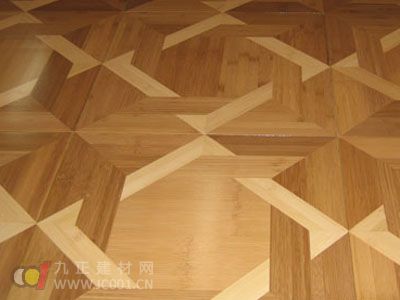Bamboo flooring purchase common sense
In China, bamboo flooring is still a relatively new product in the market, and many consumers are not well-informed about its benefits. However, when properly manufactured, bamboo flooring offers unique advantages that make it a strong competitor to traditional wood flooring. When choosing bamboo flooring, it's important to consider several key factors to ensure you're getting a high-quality product. Here are some essential tips for selecting the best bamboo flooring: 1. Check the Manufacturer’s Reputation It can be difficult for consumers to judge the quality of bamboo flooring just by looking at it. Many issues only become apparent after installation. Therefore, it's crucial to choose a manufacturer with strong technical capabilities, advanced testing equipment, and a reliable production process. A reputable manufacturer ensures consistent quality and long-term performance. 2. Evaluate the Bamboo Quality High-quality bamboo is harder and denser than other types of bamboo fiber. It should have excellent compressive and bending strength, wear resistance, low moisture absorption, and good toughness. These properties contribute to the durability and stability of the finished floor. 3. Look for Symmetrical Construction A good bamboo floor typically has a three-layer structure. The top and bottom layers should be of equal thickness and width, ensuring symmetry. This design helps prevent warping or deformation over time. 4. Avoid Bamboo Green and Yellow Residues There should be no visible green or yellow spots on the bamboo strips. These residues can affect the bonding between the pieces and may lead to gaps or poor adhesion. The bamboo should be evenly glued without any voids. 5. Ensure the Core Layer is Clean The core layer of the bamboo flooring should consist of uniform bamboo strips, free from broken pieces, wood chips, or debris. Any impurities can weaken the structural integrity and reduce the lifespan of the floor. 6. Check for Formaldehyde Emissions The formaldehyde level in the finished product should meet the E1 standard, which is considered safe for indoor use. If the floor has a strong chemical smell, especially if it irritates your eyes or throat, it may contain excessive formaldehyde. 7. Look for Uniform Color Except for antique styles, the color of the bamboo floor should be consistent. Slight variations are acceptable as long as they don’t affect the overall appearance. 8. Monitor Moisture Content Bamboo flooring is sensitive to humidity. The moisture content should be suitable for the local climate. Poorly treated products may warp, shrink, or develop mold after installation. 9. Ensure Mold and Pest Resistance Choose bamboo flooring that has been properly treated to resist mold, mildew, and insects. Floors that haven’t undergone proper protection are more likely to degrade over time. 10. Confirm High-Temperature Bonding Process Quality bamboo flooring is made using high-temperature and high-pressure bonding techniques. Some manufacturers may use manual or low-quality methods, which can lead to cracking or delamination. 11. Check for Six-Sided Coating To prevent moisture absorption and deformation, the surface, edges, and bottom of the bamboo should all be sealed. This coating helps maintain the floor’s stability and appearance. 12. Inspect the Surface Finish High-quality bamboo flooring is usually coated with imported UV-cured lacquer, which provides excellent resistance to static, dust, heat, and wear. This finish is far superior to traditional polyurethane coatings in terms of durability and aesthetics. Bamboo flooring offers an attractive combination of beauty, elasticity, moisture resistance, and hardness. Compared to wood flooring, it has a smaller growth ring, less color variation, and is less affected by sunlight. This makes it a more stable and visually consistent option. Despite its advantages, the bamboo flooring industry is still in the early stages of development, and product quality varies significantly among manufacturers. Additionally, the cost of bamboo flooring is generally higher than that of solid wood or composite floors. Therefore, it's essential for consumers to understand these key points before purchasing to avoid potential issues and protect their investment. Store Heatmap Analytics,Dwell-Time Analytics For Drugstore,Dwell-Time Analytics For Shopping Mall,Dwell-Time Analytics For Public Space OP Retail (Suzhou) Technology Co., Ltd , https://www.opretailtech.com